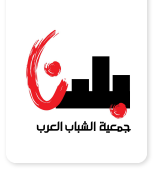A New Wave of Palestinian Youth Activism in Response to Israeli Prawer Plan
Written by : Janani Balasubramanian and Alok Vaid-Menon
Continuing its disregard for human rights and forced expulsion of indigenous peoples, the state of Israel is engaging in one of its most massive and egregious displacement projects yet. The current version of the ‘Prawer Plan’, approved on 24 June, 2013 by the Israeli knesset, gives the Israeli state authority to displace over 30,000 Arab Bedouins from their historical land in the Naqab, as well as destroy 35 ‘unrecognized’ villages. Prawer isn’t simply a threat for the future; it is already happening despite rejection of the plan from the Bedouin people: Israel has already destroyed more than 1,000 houses for forests, military centers, and Jewish settlements. According to Adalah legal center’s report on the ongoing displacement, justification for the Prawer plan is based on a manipulation of old Ottoman law under which the State of Israel considers the entirety of the Naqab to be ‘mawat’ or ‘dead land’ that can automatically be claimed by the state. Bedouins comprise some of the most impoverished residents of Israel--over 67% of Arab Bedouin families live in poverty. The Prawer Plan displacement is therefore an extreme endangerment to their survival. While the international community has largely neglected coverage of Prawer and the resistance against it, a few prominent organizations have come out in opposition. Notably, the United Nations Committee on the Elimination for Racial Discrimination, Amnesty International, the European Parliament, and the Euro-Mediterranean Human Rights Network made calls for Israel to withdraw the legislation. For the full text of the Prawer plan, see this link.
Several major protests have been coordinated in response to this catastrophic plan. Meticulous and intensive grassroots work culminated with prominent days of action in the Naqab as well as in the North on 15 July and 1 August. One of the most remarkable aspects of these events has been the unprecedented leadership of young people. We interviewed two young Palestinian organizers, Khaled Enbtawe and Soheir Asaad, who were partially responsible for organizing days of action, about their work and their thoughts on the involvement of young people in this struggle. These two are some of the many young activists who organized protest events. Their perspectives challenge the supposed complacency of young people, shed light on a new generation of young Palestinian activists, and speak to new coalitions that might change things to come drastically.
Enbtawe noted the significant presence of youth in the demonstrations: he estimates that 80% of the demonstrators were young people, and notes that many of those young people are university students. ‘[Y]oung people are influenced by the Arab Spring and what the young people do in Egypt and in Tunisia and all we call our Spring,’ he says, ‘They were influenced by that, and also they are more aware of their identity, Palestinian identity, and their political rights.’ This awareness and situated sense of self is perhaps responsible for the perseverance of these activists. Despite police brutality and arrest (Enbtawe notes that he, as well as other young people were among the 20 arrested at the demonstrations on 1 August), Enbtawe believes that demonstrations will only continue to grow in power and number. He remarks that ‘The [August 1] demonstration was bigger than the one on 15th July’ and expects that ‘the next demonstration will be even bigger.’ He predicts the next demonstration will happen around 1 October, in commemoration of the Intifada. Yet, Enbtawe does not think that this resistance will attract international media attention. ‘They don’t want to show that Arab people are participating in nonviolent demonstration. They don’t want to show the Arab people in Israel using the proper law and making solidarity with their friends from the Naqab.’
Likewise, Asaad also notes the significant presence of young people at the protests, and attributes this partly to the ‘if you want to volunteer, join us' attitude of the organizers, which she says empowers more young people to feel like they, too, can coordinate political actions and decisions. The work is not necessarily party-affiliated, she says: ‘It's not a regular movement. We don't even call ourselves a movement. We try to reach everyone: every single person we can reach. We didn't do it official. We didn't go to parties officially. We are not a party: we are people working with everyone.’ Nonetheless, while the actions were not coordinated by specific parties, many members of political parties attended. This reflected the organiser’s commitment to cooperation, unity, and joint action.
The increase in new young activists is also due to the seriousness of the Prawer Plan. As Asaad remarks, ‘Now I can see many people who were not involved in activism and politics. This is because first of all it’s a very dangerous plan...When you talk to people you can convince them that it’s a very important struggle.’ Both she and Enbtawe liken the Plan to a second Nakba. Through a successful outreach strategy of speaking to communities (both in urban areas and in villages), making videos, displaying posters, and utilising social media, the young activists were able to educate others about the seriousness of this plan and galvanize a significant response. As Enbtawe notes, ‘This is the first time that Palestinians who were in the north made a big demonstration in solidarity with the [Palestinians] in the south, the Naqab.’ This is also ‘the first time in a long time that the Palestinians in Israel have moved forward in escalating the struggle.’ The implications of this involvement are unprecedented, but the question remains if this coalition will be sustained.
Asaad also views young women as playing a pivotal role in organizing the protests and demonstrations, often at the front lines. These women were subject to both the usual police violence, and also sexism and sexual harassment. This is not a new phenomenon, Asaad says: ‘As Palestinian women activists, we not only deal with the police brutality, we also deal with people that are participating in the demonstration that don't think my role would be to stand in the first line. We had a double challenge that a man wouldn't have as an activist. We have not only to deal with the State and the police, but we also had to deal with the people who felt like we didn't have to be with the organizers and in the demonstrations in the first place.’
Enbtawe, Asaad, and organizers like them, highlight the fact that new waves of anti-imperialist resistance to the Prawer will be anchored by the presence of young people. Their approach to movement-building--an approach that is open and grassroots-focused--is both exciting, and, as Enbtawe notes, likely to grow in numbers with each action. Still, it’s not necessarily about youth, but about innovation in strategy. Asaad sums it up well: ‘Being young is not the value, but the way we deal with things.’
Written By:
Janani Balasubramanian and Alok Vaid-Menon who are activists and performance artists located in the United States who recently spent the past two months performing and facilitating writing workshops in Palestine on a solidarity trip









 فاكس 8523427-04
فاكس 8523427-04